#Brain Science
Explore tagged Tumblr posts
Text

i have some wip anyways have an unmyelinated neuron (gray matter neuron)
#artists on tumblr#biology#anime#art#moe art#moeart#my art#anime art#cells#cells at work#neuron#neuroandhemo#medicine#medicine art#neurology#brain#brain science#neuroscience#biology art#original character
69 notes
·
View notes
Text
Interesting Papers for Week 3, 2025
Synaptic weight dynamics underlying memory consolidation: Implications for learning rules, circuit organization, and circuit function. Bhasin, B. J., Raymond, J. L., & Goldman, M. S. (2024). Proceedings of the National Academy of Sciences, 121(41), e2406010121.
Characterization of the temporal stability of ToM and pain functional brain networks carry distinct developmental signatures during naturalistic viewing. Bhavna, K., Ghosh, N., Banerjee, R., & Roy, D. (2024). Scientific Reports, 14, 22479.
Connectomic reconstruction predicts visual features used for navigation. Garner, D., Kind, E., Lai, J. Y. H., Nern, A., Zhao, A., Houghton, L., … Kim, S. S. (2024). Nature, 634(8032), 181–190.
Socialization causes long-lasting behavioral changes. Gil-Martí, B., Isidro-Mézcua, J., Poza-Rodriguez, A., Asti Tello, G. S., Treves, G., Turiégano, E., … Martin, F. A. (2024). Scientific Reports, 14, 22302.
Neural pathways and computations that achieve stable contrast processing tuned to natural scenes. Gür, B., Ramirez, L., Cornean, J., Thurn, F., Molina-Obando, S., Ramos-Traslosheros, G., & Silies, M. (2024). Nature Communications, 15, 8580.
Lack of optimistic bias during social evaluation learning reflects reduced positive self-beliefs in depression and social anxiety, but via distinct mechanisms. Hoffmann, J. A., Hobbs, C., Moutoussis, M., & Button, K. S. (2024). Scientific Reports, 14, 22471.
Causal involvement of dorsomedial prefrontal cortex in learning the predictability of observable actions. Kang, P., Moisa, M., Lindström, B., Soutschek, A., Ruff, C. C., & Tobler, P. N. (2024). Nature Communications, 15, 8305.
A transient high-dimensional geometry affords stable conjunctive subspaces for efficient action selection. Kikumoto, A., Bhandari, A., Shibata, K., & Badre, D. (2024). Nature Communications, 15, 8513.
Presaccadic Attention Enhances and Reshapes the Contrast Sensitivity Function Differentially around the Visual Field. Kwak, Y., Zhao, Y., Lu, Z.-L., Hanning, N. M., & Carrasco, M. (2024). eNeuro, 11(9), ENEURO.0243-24.2024.
Transformation of neural coding for vibrotactile stimuli along the ascending somatosensory pathway. Lee, K.-S., Loutit, A. J., de Thomas Wagner, D., Sanders, M., Prsa, M., & Huber, D. (2024). Neuron, 112(19), 3343-3353.e7.
Inhibitory plasticity supports replay generalization in the hippocampus. Liao, Z., Terada, S., Raikov, I. G., Hadjiabadi, D., Szoboszlay, M., Soltesz, I., & Losonczy, A. (2024). Nature Neuroscience, 27(10), 1987–1998.
Third-party punishment-like behavior in a rat model. Mikami, K., Kigami, Y., Doi, T., Choudhury, M. E., Nishikawa, Y., Takahashi, R., … Tanaka, J. (2024). Scientific Reports, 14, 22310.
The morphospace of the brain-cognition organisation. Pacella, V., Nozais, V., Talozzi, L., Abdallah, M., Wassermann, D., Forkel, S. J., & Thiebaut de Schotten, M. (2024). Nature Communications, 15, 8452.
A Drosophila computational brain model reveals sensorimotor processing. Shiu, P. K., Sterne, G. R., Spiller, N., Franconville, R., Sandoval, A., Zhou, J., … Scott, K. (2024). Nature, 634(8032), 210–219.
Decision-making shapes dynamic inter-areal communication within macaque ventral frontal cortex. Stoll, F. M., & Rudebeck, P. H. (2024). Current Biology, 34(19), 4526-4538.e5.
Intrinsic Motivation in Dynamical Control Systems. Tiomkin, S., Nemenman, I., Polani, D., & Tishby, N. (2024). PRX Life, 2(3), 033009.
Coding of self and environment by Pacinian neurons in freely moving animals. Turecek, J., & Ginty, D. D. (2024). Neuron, 112(19), 3267-3277.e6.
The role of training variability for model-based and model-free learning of an arbitrary visuomotor mapping. Velázquez-Vargas, C. A., Daw, N. D., & Taylor, J. A. (2024). PLOS Computational Biology, 20(9), e1012471.
Rejecting unfairness enhances the implicit sense of agency in the human brain. Wang, Y., & Zhou, J. (2024). Scientific Reports, 14, 22822.
Impaired motor-to-sensory transformation mediates auditory hallucinations. Yang, F., Zhu, H., Cao, X., Li, H., Fang, X., Yu, L., … Tian, X. (2024). PLOS Biology, 22(10), e3002836.
#science#scientific publications#neuroscience#research#brain science#cognitive science#neurobiology#cognition#psychophysics#neural computation#computational neuroscience#neural networks#neurons
22 notes
·
View notes
Text


Yall need to look at this article lol...
Me and my partner were losing our minds over how this article was written about fake news as it regards to democrats vs republicans. who shares it more, who has a harder time telling the difference & discerning what's true, etc.
I feel like most of us know the "fake news" MAJORITY is coming from conservatives. But somehow, this article was reporting republicans as having "higher cognitive efficiency than democrats"? Even though BY THEIR OWN REPORTS, democrats were more accurate in determining real from fake news.
In discussion we wondered why they'd use the measurement of "metacognitive efficiency" when really what they're looking for should be their accuracy?
Because what they found was REPUBLICANS KNOW THEYRE WORSE AT IT. They admit that through the prior assessments lol. They say oh no, I know I can't tell the difference & favor republican headlines.
And because of that they were rated with a higher metacognitive efficiency score because...they knew they did bad, and then did bad lol??? We knew that had to be some kind of disingenuous ploy to make republicans look better.
As the note says...when we thought about it, and by chance mentioned "yknow it's like there's a dissonance..." we said oh my god. That's it lmao.
These people intentionally used this backwards measurement, which is a reverse of cognitive dissonance, in an attempt to make the playing field look either even or very close. (That's another thing...they use phrases throughout the WHOLE PAPER that say "dems and reps performed about the same" and then give figures that say the EXACT opposite).
This is just so wild. I need to know other people's response to this lmao.
Oh, and it's from Yale! Home of rich dumbasses and untrustworthy work. Who would've thought.
#us politics#politics#republicans#democrats#cognitive science#cognitive dissonance#metacognition#science#brain science#psychology#psychoanalysis#leftist politics#right wing politics#fake news#discussion#political#political discourse#politican discussion#discuss#lets discuss#us news#news#yale#yale university
30 notes
·
View notes
Text


“We Are Made of Stars” (circa. 2022) by me 💫🌟✨⭐️🧠
#my art#cut outs#collage#stars#neurons#traditional art#black and white#contrast#brains#brain science#psychology#mental illness#vent art#vent#neuroscience#neurodiversity#art#discord#science#axons#dendrites
5 notes
·
View notes
Text
Accessing Memory (Diagram)

Patreon
#studyblr#notes#medblr#medical notes#med notes#psychology#psych#psych notes#psychology notes#psychiatry#psychiatry notes#neurology#neuroscience#science#neurobiology#neurology notes#brain#brain science#biology#biology notes#neuroscience notes#neurobiology notes#memory#memory science#science of memory#memory retrieval#working memory#long-term memory#short-term memory
7 notes
·
View notes
Text
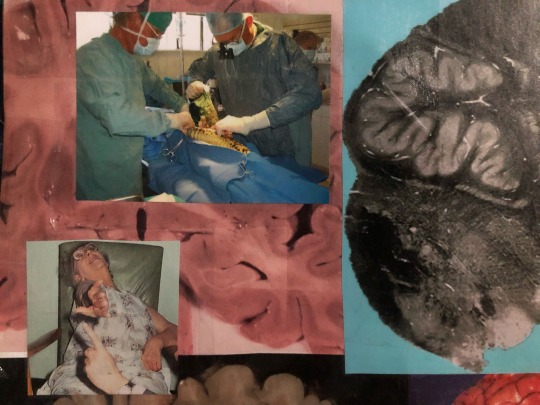
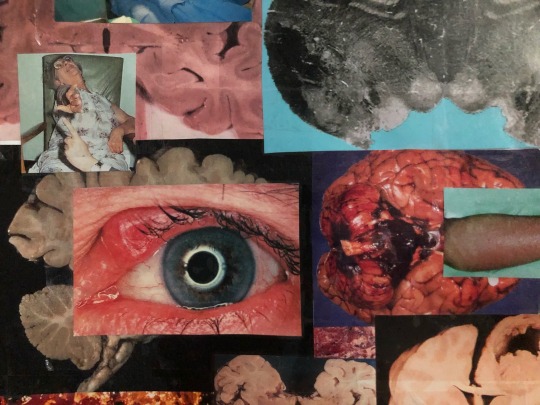
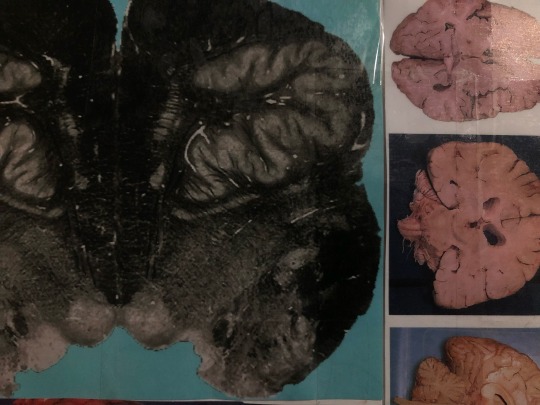
🧠
#brains are weird#brain stuff#brainiac#collage#art#artwork#collage art#medical books#textbook#brainstorm#anatomy#eyes#blue eyes#surgery#xray#x ray machine#gory art#cute gore#gore lover#brain science
11 notes
·
View notes
Text
Function of Brain Stem
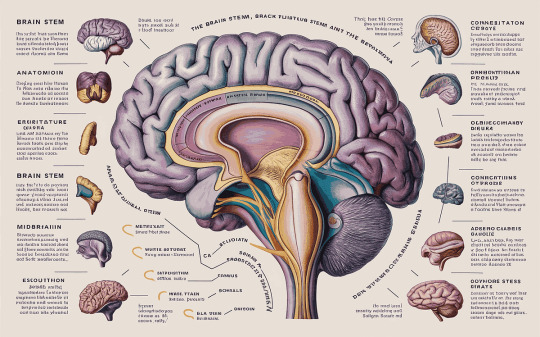
Introduction
The brain stem, often referred to as the “gateway to the brain,” is a vital component of the central nervous system responsible for regulating essential bodily functions and facilitating communication between the brain and the rest of the body. Comprising the midbrain, pons, and medulla oblongata, this intricate structure plays a crucial role in sustaining life and maintaining homeostasis.
1. Regulation of Basic Life Functions
At the core of its function, the brain stem governs fundamental physiological processes necessary for survival, including heartbeat, respiration, and blood pressure regulation. The medulla oblongata, situated at the base of the brain stem, serves as a control center for autonomic functions, such as breathing rate and heart rhythm, by monitoring sensory input and orchestrating appropriate responses.
2. Conduction Pathway for Sensory and Motor Signals
As a conduit between the brain and the spinal cord, the brain stem serves as a relay station for sensory information from the body to the brain and motor commands from the brain to the body. Nerve fibers ascend through the brain stem carrying sensory impulses towards the brain for processing, while descending fibers convey motor signals from the brain to the spinal cord, coordinating voluntary movements and reflex actions.
3. Integration of Reflexes
The brain stem plays a pivotal role in mediating reflex actions, automatic responses that occur in response to specific stimuli without conscious effort. Reflex arcs involving sensory receptors, afferent nerves, interneurons within the brain stem, and efferent nerves facilitate rapid, involuntary reactions to stimuli, such as withdrawing from pain or adjusting posture to maintain balance, ensuring swift and adaptive responses to environmental changes.
4. Control of Arousal and Consciousness
Crucially, the brain stem regulates levels of consciousness and arousal, exerting influence over wakefulness, alertness, and sleep-wake cycles. The reticular formation, a network of nuclei spanning the brain stem, modulates neural activity to promote wakefulness during periods of stimulation and facilitate transitions into sleep or altered states of consciousness, underscoring its pivotal role in regulating the overall level of cognitive awareness.
5. Coordination of Cranial Nerve Functions
Integral to its function, the brain stem houses nuclei responsible for controlling several cranial nerves involved in sensory perception, motor control, and autonomic regulation of organs in the head and neck region. By coordinating the activities of these cranial nerves, the brain stem facilitates crucial functions such as vision, hearing, facial expressions, swallowing, and maintaining cardiovascular and respiratory homeostasis.
6. Facilitation of Postural Control and Balance
Moreover, the brain stem contributes to postural control and balance through its connections with the cerebellum, a structure located at the base of the brain. By integrating sensory feedback from the body and coordinating motor commands, the brain stem helps maintain stability and equilibrium, enabling smooth and coordinated movements essential for navigating the environment safely.
7. Modulation of Autonomic Functions
Additionally, the brain stem modulates autonomic functions, regulating visceral activities such as digestion, urination, and sexual arousal through its influence on the autonomic nervous system. Sympathetic and parasympathetic pathways originating in the brain stem orchestrate physiological responses to stress, rest, and various internal and external stimuli, ensuring adaptive adjustments to maintain internal balance and respond to changing environmental demands.
8. Regulation of Cardiovascular and Respiratory Functions
Furthermore, the brain stem plays a central role in regulating cardiovascular and respiratory functions, ensuring the delivery of oxygen-rich blood to tissues and organs and maintaining optimal gas exchange in the lungs. Through specialized nuclei and reflex pathways, the brain stem modulates heart rate, blood pressure, and breathing patterns in response to physiological needs and environmental cues, safeguarding vital organ perfusion and metabolic balance.
9. Contribution to Neuroendocrine Control
Lastly, the brain stem contributes to neuroendocrine control by serving as a bridge between the nervous system and the endocrine system. Hypothalamic nuclei within the brain stem integrate neural and hormonal signals, regulating the release of pituitary hormones that govern various physiological processes, including growth, metabolism, reproduction, and stress responses, thereby exerting profound influence over systemic homeostasis and adaptation.
Conclusion
In summary, the brain stem embodies the intricate interplay between neural structures and physiological functions, serving as a linchpin of the central nervous system’s regulatory machinery. Its diverse roles encompass vital autonomic, sensory, motor, and integrative functions essential for maintaining life, consciousness, and adaptive responses to internal and external stimuli. Through its complex networks and dynamic interactions, the brain stem exemplifies the remarkable complexity and resilience of the human brain, underscoring its paramount importance in sustaining health, vitality, and cognitive function.
FAQs
1. What is the primary function of the brain stem? The brain stem is responsible for regulating essential physiological functions, including breathing, heart rate, and blood pressure, as well as controlling basic involuntary movements like swallowing and vomiting.
2. How does the brain stem connect the brain to the rest of the body? The brain stem serves as a conduit between the brain and the spinal cord, facilitating the transmission of sensory and motor signals to and from the body’s peripheral nervous system.
3. What are the major anatomical divisions of the brain stem? The brain stem comprises three main regions: the medulla oblongata, the pons, and the midbrain, each with distinct structures and functions contributing to overall neural regulation and coordination.
4. How does the brain stem contribute to consciousness and arousal? The reticular formation, a network of nuclei located throughout the brain stem, plays a critical role in regulating wakefulness, attention, and arousal levels by modulating the activity of cortical and subcortical brain regions.
5. What happens when the brain stem is damaged? Damage to the brain stem can result in profound neurological deficits, including loss of consciousness, impaired vital functions such as breathing and heart rate, and disturbances in sensory and motor control, depending on the extent and location of the injury.
10 notes
·
View notes
Text
How can instrumental music be so relatable
3 notes
·
View notes
Text
"The energy from a star is practically infinite, just like the love that comes from a heart.. we radiate love like a star. It's just another state of energy.."
This little light of mine, I'm gonna let it shine - eUë
#star energy#star#stars#the stars#raw energy#good energy#energy#love energy#infinite love#radiate love#radiate#radiation#mine#science#scientific facts#science facts#brain science#truth#truthbetold#philosophy#dropping facts#facts#true love#pure love#spilled ink#spilled thoughts#spilled words#love quotes#love#love quote life quotes
64 notes
·
View notes
Text
This has been stuck in my head and I've played it constantly lately because I think my fiancee has forgotten that he really is the best. I've tried to remind him and he just can't seem to see it. He's been struggling mentally and emotionally. He's been using and even that doesn't seem to help him escape. That's usually the sign that it's time to stop. He's in rehab again. The second time this year and instead of looking at it in a judgemental way I see it as "he's in rehab for the second time this year because he's trying to get better and sometimes it takes more time." He just needs a little more time. When he's himself, sober, and on his meds he really is better than all the rest.
We're all worthy and we all deserve good lives. No matter the lies we tell ourselves about what we believe or the beliefs of others because at the end of the day we are all worthy.
Substance abuse is not a moral ineptitude. It's has nothing to do with morality or moral code. It has everything to do with mental health and emotional well being. It's not drug addiction. It's comfort seeking. Something that we all do as human beings. It just doesn't always look the same as someone else's comfort seeking.
Take care of your brains. You guys don't realize the actual functioning capacity your brain has and is executing on a daily basis. The various experiences and substances and trauma that we absorb throughout our lives changes the way our brains function for better or worse.










#mental heath awareness#substance abuse#substance addiction#drug abuse#addiction recovery#addiction#recovering addict#recovery#tina turner#the best#spotify#my best friend#best friend/ love of my life#love of my life#our brains are wild#brain science
4 notes
·
View notes
Text
Interesting Papers for Week 44, 2024
The role of the human hippocampus in decision-making under uncertainty. Attaallah, B., Petitet, P., Zambellas, R., Toniolo, S., Maio, M. R., Ganse-Dumrath, A., … Husain, M. (2024). Nature Human Behaviour, 8(7), 1366–1382.
Modeling hippocampal spatial cells in rodents navigating in 3D environments. Aziz, A., Patil, B. K., Lakshmikanth, K., Sreeharsha, P. S. S., Mukhopadhyay, A., & Chakravarthy, V. S. (2024). Scientific Reports, 14, 16714.
Anterior cingulate cortex provides the neural substrates for feedback-driven iteration of decision and value representation. Chen, W., Liang, J., Wu, Q., & Han, Y. (2024). Nature Communications, 15, 6020.
Firing rate adaptation affords place cell theta sweeps, phase precession, and procession. Chu, T., Ji, Z., Zuo, J., Mi, Y., Zhang, W., Huang, T., … Wu, S. (2024). eLife, 12, e87055.4.
Non-Hebbian plasticity transforms transient experiences into lasting memories. Faress, I., Khalil, V., Hou, W.-H., Moreno, A., Andersen, N., Fonseca, R., … Nabavi, S. (2024). eLife, 12, e91421.3.
Gaze-centered gating, reactivation, and reevaluation of economic value in orbitofrontal cortex. Ferro, D., Cash-Padgett, T., Wang, M. Z., Hayden, B. Y., & Moreno-Bote, R. (2024). Nature Communications, 15, 6163.
Modulation of alpha oscillations by attention is predicted by hemispheric asymmetry of subcortical regions. Ghafari, T., Mazzetti, C., Garner, K., Gutteling, T., & Jensen, O. (2024). eLife, 12, e91650.3.
Contributions of cortical neuron firing patterns, synaptic connectivity, and plasticity to task performance. Insanally, M. N., Albanna, B. F., Toth, J., DePasquale, B., Fadaei, S. S., Gupta, T., … Froemke, R. C. (2024). Nature Communications, 15, 6023.
Consequences of eye movements for spatial selectivity. Intoy, J., Li, Y. H., Bowers, N. R., Victor, J. D., Poletti, M., & Rucci, M. (2024). Current Biology, 34(14), 3265-3272.e4.
Prediction error determines how memories are organized in the brain. Kennedy, N. G., Lee, J. C., Killcross, S., Westbrook, R. F., & Holmes, N. M. (2024). eLife, 13, e95849.3.
Neural Representation of Valenced and Generic Probability and Uncertainty. Kim, J.-C., Hellrung, L., Grueschow, M., Nebe, S., Nagy, Z., & Tobler, P. N. (2024). Journal of Neuroscience, 44(30), e0195242024.
Selective consolidation of learning and memory via recall-gated plasticity. Lindsey, J. W., & Litwin-Kumar, A. (2024). eLife, 12, e90793.3.
A synergistic workspace for human consciousness revealed by Integrated Information Decomposition. Luppi, A. I., Mediano, P. A., Rosas, F. E., Allanson, J., Pickard, J., Carhart-Harris, R. L., … Stamatakis, E. A. (2024). eLife, 12, e88173.4.
Memorability shapes perceived time (and vice versa). Ma, A. C., Cameron, A. D., & Wiener, M. (2024). Nature Human Behaviour, 8(7), 1296–1308.
Mixed Representations of Sound and Action in the Auditory Midbrain. Quass, G. L., Rogalla, M. M., Ford, A. N., & Apostolides, P. F. (2024). Journal of Neuroscience, 44(30), e1831232024.
Neural activity ramps in frontal cortex signal extended motivation during learning. Regalado, J. M., Corredera Asensio, A., Haunold, T., Toader, A. C., Li, Y. R., Neal, L. A., & Rajasethupathy, P. (2024). eLife, 13, e93983.3.
Using synchronized brain rhythms to bias memory-guided decisions. Stout, J. J., George, A. E., Kim, S., Hallock, H. L., & Griffin, A. L. (2024). eLife, 12, e92033.3.
Cortical plasticity is associated with blood–brain barrier modulation. Swissa, E., Monsonego, U., Yang, L. T., Schori, L., Kamintsky, L., Mirloo, S., … Friedman, A. (2024). eLife, 12, e89611.4.
Structural and sequential regularities modulate phrase-rate neural tracking. Zhao, J., Martin, A. E., & Coopmans, C. W. (2024). Scientific Reports, 14, 16603.
An allocentric human odometer for perceiving distances on the ground plane. Zhou, L., Wei, W., Ooi, T. L., & He, Z. J. (2024). eLife, 12, e88095.3.
#neuroscience#science#research#brain science#scientific publications#cognitive science#neurobiology#cognition#psychophysics#neurons#neural computation#neural networks#computational neuroscience
23 notes
·
View notes
Text


The sunlight hit my desk and it was so beautiful :D
So update on classes:
I’m taking a Neurosci anatomy course so I created a resource list filled with materials and study techniques I’ll use to do well in the class.
Resource List:
Recommended textbook: Read each section. After every section, summarize what you’ve just learned out loud. If information is missing or incorrect, note those down on your notes app/notebook.
Lecture: Review lecture notes, Identify student learning objectives (SLOs) and answer them from memory by writing down a short summary. Review slides and note down what you got wrong in notes. Create flashcards if material needs to be memorized. Make concept maps/brainmaps if you need help making connections between topics.
Brain figurine: Play around with it and after learning some background in class, identify parts of the brain out loud from memory.
Office hours (in person and online appointments): Ask any questions you have written in your notes. And converse with the instructor! They were students too. Ask them about their career path and why they do what they do.
Hope this helps anyone taking similar courses~
#neurology#anatomy#brain science#stemblr#women in stem#stem academia#academic weapon#academicexcellence#student#neuroscientist#neuroscience#psychology
4 notes
·
View notes
Text
Buckle up, because this virtual topological theme-park ride through the cosmos will take you on an anthropic odyssey like no other. With stunning illustrations and captivating commentary, you'll journey through the history of human consciousness and our relationship with the universe. From the departure of Earth to the game of life, let's explore together what truly sets humanity apart. Are you ready to board the StarShip of knowledge and imagination? 🚀 #EarthCentreEarthCentre #TheEndOfTheUniverse #AnthropicOdyssey #UniversalSkull
3 notes
·
View notes
Text
THERES PEOPLE WHO ONLY THINK IN PICTURES AND PEOPLE WHO ONLY THINK IN WORDS ???? THATS LIKE TRYING TO WALK WITH ONLY ONE LEG.
Okay, okay so I did some Googling very thorough research, and thinking in pictures is called visual thinking (yeah, no shit.) and if you hear your thoughts, or if there’s like a voice in your head that’s an inner monologue.
Theres no clear data about how many people ONLY have one of these, just which one they prefer ( it’s pretty even, 50-50). But I have both ??? And I can’t find a straight answer as to if not a lot of people have both ??
im very confused rn brb gonna go dig myself a Wikipedia rabbit hole
5 notes
·
View notes
Text
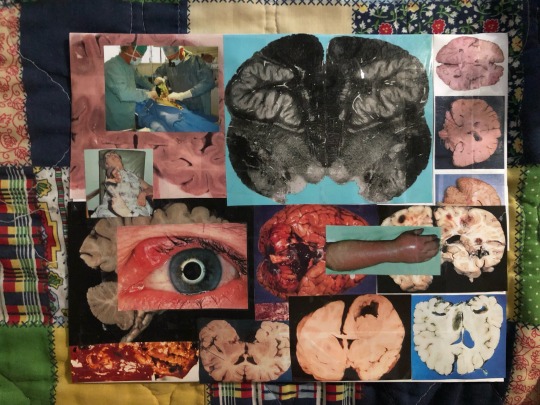
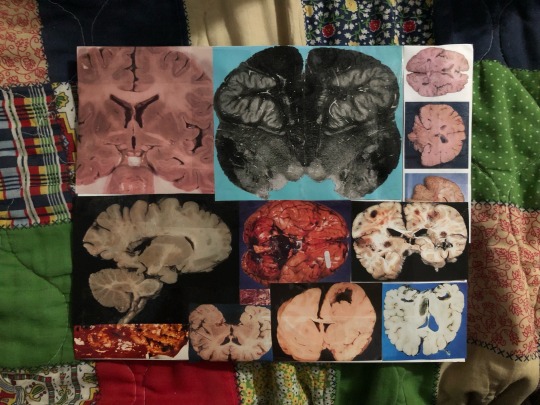
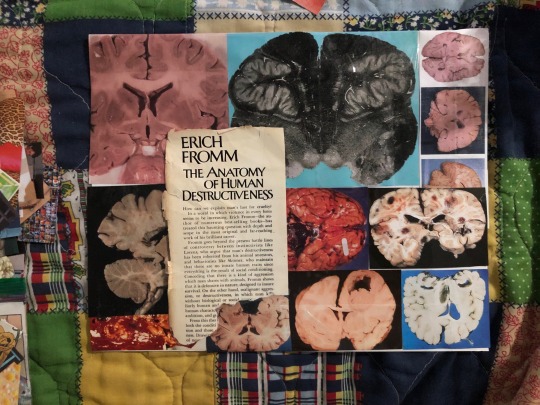
#collage#collage art#art#artwork#mental health#medical books#anatomy#brainiac#brains are weird#brain science#brain stuff#collaging
7 notes
·
View notes
Text
When Does Your Brain Stop Developing
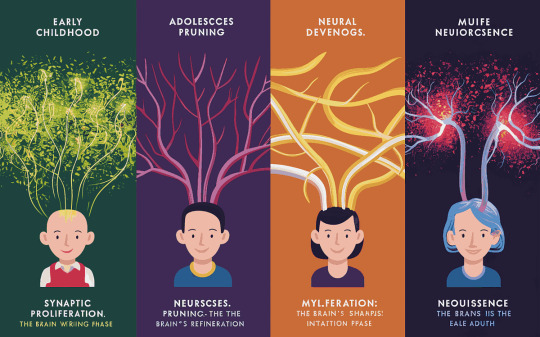
The human brain, an organ of unparalleled complexity, undergoes a lifelong journey of development. This voyage, marked by significant milestones, extends well beyond the often-quoted age of maturation. To comprehend the nuances of brain development, it is crucial to delve into the intricate processes that govern the evolution of our cerebral faculties.
The Early Years
The genesis of brain development occurs in the womb, with the formation of neural structures commencing as early as the third week of gestation. By birth, an infant’s brain has already undergone an extraordinary phase of growth, laying the groundwork for future cognitive and sensory experiences. During the initial years of life, the brain is highly plastic, rapidly forming synaptic connections at an astonishing rate. This period, characterised by heightened neuroplasticity, is fundamental for acquiring language, motor skills, and basic cognitive abilities.
The synaptic density in a child’s brain peaks around the age of three, surpassing that of an adult. This phenomenon underscores the significance of early childhood experiences, which profoundly shape neural pathways. Environmental stimuli, social interactions, and early education play pivotal roles in sculpting the brain’s architecture during this critical window.
Adolescence
Adolescence heralds a transformative phase in brain development, marked by a fine-tuning of neural networks and the establishment of more efficient pathways. This period is characterised by the pruning of excess synapses, a process that refines the brain’s circuitry based on experiential input. The prefrontal cortex, responsible for executive functions such as decision-making, impulse control, and emotional regulation, undergoes significant maturation during this stage.
The transition from adolescence to early adulthood is a time of substantial vulnerability and opportunity. The brain’s reward system, particularly sensitive to dopamine, drives risk-taking behaviours and the pursuit of novel experiences. This neurobiological backdrop can elucidate the heightened emotional intensity and exploratory tendencies observed in teenagers.
Early Adulthood
Contrary to the once-prevailing belief that brain development ceases in early adulthood, contemporary research suggests that significant changes continue well into the third decade of life. The maturation of the prefrontal cortex, for instance, extends into the mid-20s. This ongoing development enhances an individual’s capacity for abstract reasoning, strategic planning, and complex problem-solving.
During early adulthood, the brain also undergoes a process of myelination, whereby axons are insulated with a fatty substance called myelin. This enhances the speed and efficiency of neural communication, facilitating the seamless integration of diverse cognitive processes. Consequently, young adults experience improvements in cognitive control, working memory, and emotional stability.
Midlife
Neurogenesis, the production of new neurons, persists into adulthood, albeit at a reduced rate compared to earlier stages of life. This ongoing neurogenesis, particularly in the hippocampus, supports learning and memory functions. Engaging in intellectually stimulating activities, physical exercise, and maintaining social connections can foster neurogenesis and mitigate age-related cognitive decline.
The brain’s capacity for plasticity, although diminished with age, remains significant throughout midlife. Cognitive reserve, the brain’s ability to adapt and compensate for potential damage, is bolstered by lifelong learning and mental engagement. Therefore, maintaining an active and enriched lifestyle can contribute to sustained cognitive health and resilience.
Later Adulthood
In later adulthood, the brain continues to adapt, albeit with notable changes in its structural and functional integrity. While certain cognitive faculties such as processing speed and episodic memory may decline, others like vocabulary and accumulated knowledge often remain robust. The brain exhibits a remarkable ability to reorganise and rewire itself in response to new challenges, a testament to its enduring plasticity.
Emerging research highlights the potential for cognitive training, mindfulness practices, and social engagement to support brain health in older age. Such interventions can enhance neural connectivity, promote emotional well-being, and sustain cognitive functions.
Conclusion
The notion that brain development concludes at a specific age is an oversimplification. Instead, brain development is a dynamic, lifelong process influenced by genetic, environmental, and experiential factors. From the rapid synaptic proliferation of early childhood to the subtle refinements of later adulthood, our brains continuously evolve, adapt, and learn.
Understanding the trajectory of brain development underscores the importance of nurturing cognitive health at every stage of life. By fostering environments that stimulate intellectual growth, emotional resilience, and social connection, we can optimise our brain’s potential and enhance our overall well-being.
FAQs
1. Can adults increase their brain capacity? Yes, adults can increase their brain capacity through activities that promote neuroplasticity, such as learning new skills, engaging in regular physical exercise, and maintaining social connections.
2. Does the brain continue to develop after the age of 25? Yes, the brain continues to develop and adapt throughout adulthood. While the prefrontal cortex fully matures around age 25, other areas of the brain remain plastic and can change in response to new experiences.
3. How does stress affect brain development? Chronic stress can negatively impact brain development, particularly in areas involved in memory and emotional regulation. It can lead to the shrinkage of the hippocampus and reduce the production of new neurons.
4. What role does sleep play in brain development? Sleep is crucial for brain development and overall brain health. During sleep, the brain consolidates memories, processes information, and removes toxins. Poor sleep can impair cognitive functions and hinder brain development.
4 notes
·
View notes